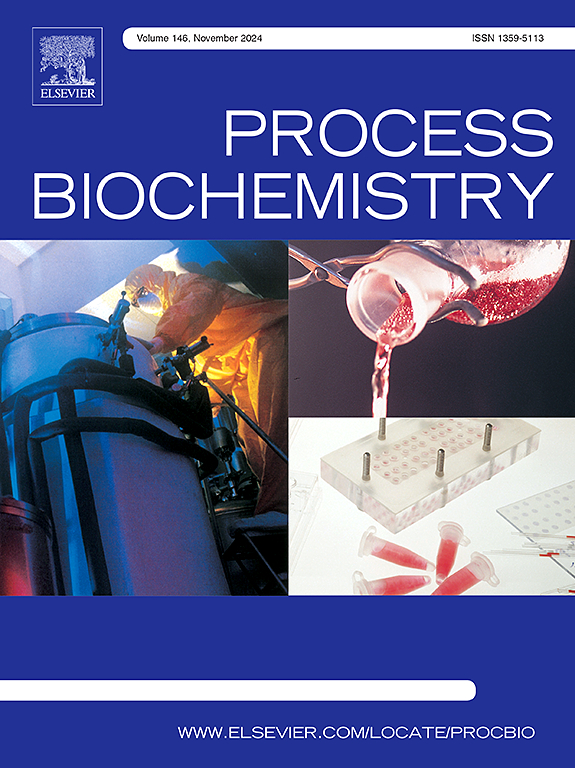Verification of mass transfer kinetics for chemical oxygen demand removal during the early stages of biogranulation
IF 4
3区 生物学
Q2 BIOCHEMISTRY & MOLECULAR BIOLOGY
引用次数: 0
Abstract
Optimizing sequencing batch reactor (SBR) efficiency requires a comprehensive understanding of the mechanisms and mass transfer kinetics governing organic matter removal during the early stages of aerobic granular sludge (AGS) biogranulation. This study employed the Generalized Fulazzaky equations to assess behavioral mechanisms and kinetics of external, internal, and global mass transfer for chemical oxygen demand (COD) removal from domestic sewage during the initial 69-day SBR operation. The dense AGS structure formed through mixing SBR processes enhanced internal mass transfer (IMT) rate, yielding a 4.07 % increase in SBR efficiency compared to conventional system. Results showed that IMT rates closely tracked global mass transfer rates, while substantially exceeding external mass transfer (EMT) rates, suggesting EMT as the primary mass transfer resistance. The dynamic response of AGS formation, driven by elevated IMT rates, enhances SBR performance, offering promising applications in high-efficiency wastewater treatment.
生物造粒初期化学需氧量去除传质动力学的验证
优化序批式反应器(SBR)效率需要全面了解好氧颗粒污泥(AGS)生物颗粒化早期阶段有机物去除的机制和传质动力学。本研究采用广义Fulazzaky方程来评估SBR初始69天运行期间去除生活污水中化学需氧量(COD)的外部、内部和整体传质的行为机制和动力学。通过混合SBR工艺形成的致密AGS结构提高了内部传质率(IMT),与常规体系相比,SBR效率提高了4.07 %。结果表明,IMT速率与全球传质速率密切相关,但显著超过外部传质(EMT)速率,表明EMT是主要的传质阻力。在IMT速率升高的驱动下,AGS形成的动态响应增强了SBR的性能,在高效废水处理中具有广阔的应用前景。
本文章由计算机程序翻译,如有差异,请以英文原文为准。
求助全文
约1分钟内获得全文
求助全文
来源期刊

Process Biochemistry
生物-工程:化工
CiteScore
8.30
自引率
4.50%
发文量
374
审稿时长
53 days
期刊介绍:
Process Biochemistry is an application-orientated research journal devoted to reporting advances with originality and novelty, in the science and technology of the processes involving bioactive molecules and living organisms. These processes concern the production of useful metabolites or materials, or the removal of toxic compounds using tools and methods of current biology and engineering. Its main areas of interest include novel bioprocesses and enabling technologies (such as nanobiotechnology, tissue engineering, directed evolution, metabolic engineering, systems biology, and synthetic biology) applicable in food (nutraceutical), healthcare (medical, pharmaceutical, cosmetic), energy (biofuels), environmental, and biorefinery industries and their underlying biological and engineering principles.
 求助内容:
求助内容: 应助结果提醒方式:
应助结果提醒方式:


